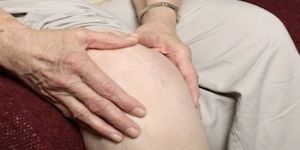Publication
Article
Surgical Rounds®
Listening for Crackle, Clunk in Total Knee Arthroplasty
Author(s):
Total knee arthroplasty (TKA) has become a popular and generally successful surgery with increasing importance as Baby Boomers enter their golden years expecting to remain active and pain-free. However, straightening the knee from a fully bent position creates a clunk or crackle for up to 18% of TKA patients.

Total knee arthroplasty (TKA) has become a popular and generally successful surgery with increasing importance as Baby Boomers enter their golden years expecting to remain active and pain-free. However, straightening the knee from a fully bent position creates a clunk or crackle for up to 18% of TKA patients.
Patellar clunk syndrome and patellofemoral crepitus can be annoying, but for a few TKA patients, they are painful. Thus, 2 physicians associated with the biomedical engineering departments at the University of Colorado and the University of Tennessee addressed this problem in a comprehensive review published in the March 2014 issue of Clinics in Orthopedic Surgery.
The authors found clunk and crepidation are primarily associated with the implantation of posterior cruciate substituting designs, which usually indicate peripatellar fibrosynovial hyperplasia at the junction of the superior pole of the patella and the distal quadriceps tendon. When patients bend their knees, a fibrous bump becomes trapped in a femural notch. The clunk occurs when the fibrosynovial tissue exits the intercondylar box. However, if fibrosynovial hyperplasia appears without a discrete nodule, then patients develop a crackle, but no clunk.
The article reviewed several etiologies, including femoral component designs with a high intercondylar box ratio, previous knee surgery, reduced patellar tendon length, thinner patellar components, reduced patella-patellar component composite thickness, and smaller femoral components. The authors noted second and third generation posterior stabilized femoral components usually feature a decreased intercondylar box ratio, leading to a lower likelihood of clunk and crepitus.
They also suggested surgeons should include the potential for clunk or crepitus while providing informed consent to patients who have had prior TKAs. Selecting femoral components with a reduced intercondylar box ratio, using thicker patellar components, avoiding over-resection, and debriding fibrosynovial tissue during TKA are all options.
Since most patients with crepitus have minimal symptoms, they require no treatment. However, those with measureable disability usually find relief after arthroscopic debridement of the fibrosynovial hyperplasia.





